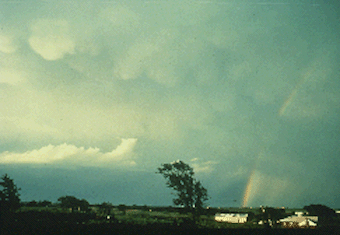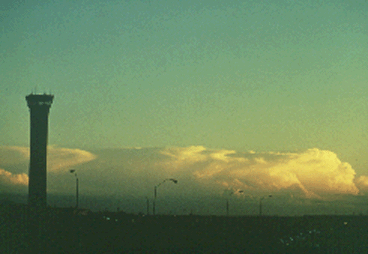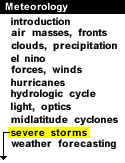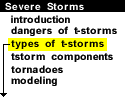
|
After the precipitation has ended, a squall line is seen moving into the eastern horizon. Stable, stratiform clouds (those that develop in layers rather than clumps) predominate on the rear flank of a squall line.

Photograph by: Doswell
Mammatus often appear on the underside of the rear flank anvil (although they are also common on the front-flank anvil), as in the upper portions of the photograph. This upwind squall line anvil is not the same as a strongly back-sheared anvil, but consists of anvil refuse left behind as the advancing gust front moves rapidly eastward. The same phenomenon occurs when the squall line advances southeast or east, while upper winds blow anvil material north and northeast.

Photograph by: Doswell
Continuing its eastward movement, a squall line is pictured at sunset, looking to the distant southeast. The largest tops near the south end of the line graphically illustrate the tendency for fresh, strong convection to build southward with time, towards the area of strong inflow.

along leading edge |
|

linear radar echoes |





